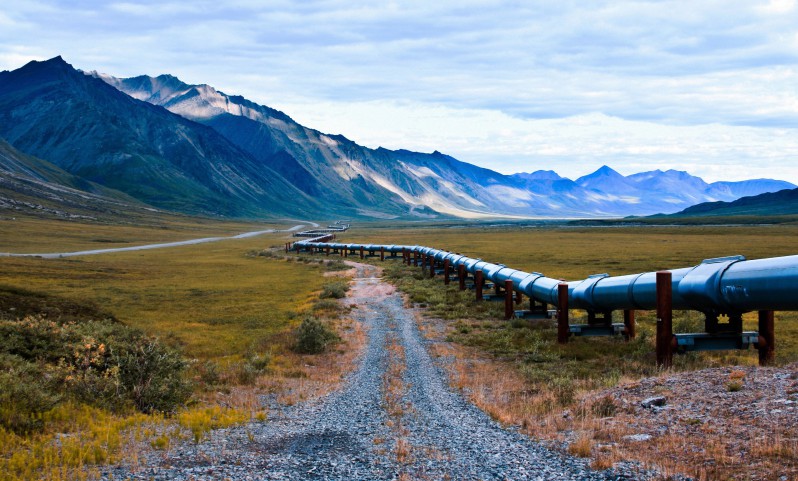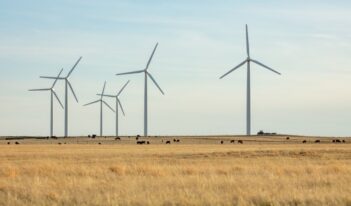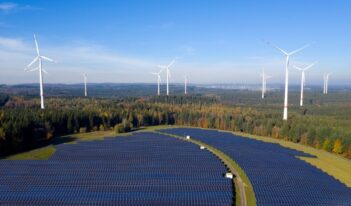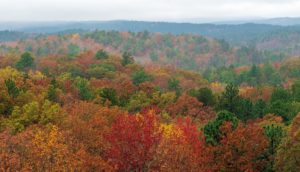
Regulatory reversals raise questions about future oil development in the Arctic National Wildlife Refuge.
The world’s largest unspoiled ecosystem sits atop an oil reserve potentially large enough to fuel the entire United States for a year. Nestled in northeast Alaska, the oil supply underneath the Coastal Plain of the Arctic National Wildlife Refuge (ANWR) has caused controversy for decades.
Extracting oil from ANWR would create thousands of jobs, generate billions of dollars of federal and state revenue, and contribute to the nation’s independent energy supply. But extraction would also permanently scar the landscape, disturb polar bear and caribou nurseries, and threaten the native Gwitch’in people’s way of life.
Faced with the choice between preservation and development, the United States appears to have chosen oil—but the truth is more complicated than that.
After debating the issue for 40 years, the U.S. Congress in 2017 opened parts of ANWR for oil and gas development. The Trump Administration issued the area’s first oil leases on January 19, 2021. The next day, shortly after his inauguration, President Joe Biden signed an executive order temporarily halting all development. Oil advocates and opponents alike wonder what will happen now.
Legislation adopted in 1980 to protect ANWR initially prohibited oil and gas development on the 1.57 million acre Coastal Plain “until authorized by an Act of Congress.” Forty years and more than 35 failed votes later, the 2017 Tax Cuts and Jobs Act ended that moratorium.
The Trump Administration promptly got to work. The Tax Cuts and Jobs Act tasked the Bureau of Land Management (BLM) with managing ANWR’s oil and gas development program. Throughout the United States, the BLM sells leases that entitle private parties to extract resources on public lands. Typically, the agency takes years to develop a comprehensive leasing program plan and then an additional four months to complete the leasing process.
The BLM’s timeline for ANWR was much shorter. The agency completed the required environmental analysis in just 18 months, adopting a final decision to open the area for development in August 2020.
On November 17, 2020—ten days after Biden, who pledged to halt development in ANWR, won the presidential election—the BLM started its final leasing process.
The agency cut short the 30-day nomination and comment period, publishing an auction notice after only 20 days. After the January 6 auction, antitrust review concluded in two weeks, rather than the usual two months. The BLM issued its final, 10-year leases on January 19, President Donald J. Trump’s last day in office, only to be followed the next day by President Biden’s executive order placing “a temporary moratorium on all activities of the Federal Government relating to the implementation of the Coastal Plain Oil and Gas Leasing Program.” ANWR development started and stopped in a day.
Now what?
The Biden Administration probably cannot cancel the leases that the BLM already sold. But the courts can.
Four lawsuits— brought by conservation organizations, the Gwich’in and Venetie Native people, and a coalition of states—are moving through the federal courts. These challengers allege that the BLM’s environmental analyses, public consultation, and leasing process did not comply with federal laws, such as the National Environmental Policy Act and the Endangered Species Act.
Observers indicate that the cases are strong, particularly because the BLM underestimated the impact of climate change on the Coastal Plain and shortened public comment periods. If the suits are successful, the courts could vacate the issued leases.
But if the courts cancel the leases, the Tax Cuts and Jobs Act still requires that the BLM hold an ANWR lease sale by the end of 2021. Members of Congress recently reintroduced bipartisan legislation to repeal that Tax Cuts and Jobs Act auction requirement and permanently protect the Coastal Plain from development.
Regardless of the outcomes in courts and Congress, drilling in ANWR may never go forward for economic reasons. At the January auction, only half of the offered leases found buyers, raising only $14.4 million—far less than the Congressional Budget Office’s $1.8 billion estimate.
Moreover, even the lease sales that did occur revealed weak private sector interest in drilling in ANWR. A corporation owned by the state of Alaska bought 9 of the 11 leases that sold. Because this state-owned corporation has never held federal oil leases before, to move forward with drilling on ANWR’s undisturbed Coastal Plain, Alaska would have to spend billions to purchase equipment and build infrastructure.
Experts suggest that the high costs will push Alaska to partner with oil companies to develop the leases. But oil companies do not seem interested.
No major oil company participated in the BLM’s January auction. Furthermore, over 50 financial institutions, including most major U.S. banks, have stated that they will not fund ANWR development projects. Anti-drilling activism, concerns about climate change, low oil prices, high development costs, and scant data about ANWR’s oil seem to have driven off Alaska’s potential partners.
With industry steering clear of the project, development seems unlikely anytime soon. Even if Alaska does secure a private sector partner or funding to develop its leases, experts do not expect oil production to start on the Coastal Plain until 2031 because of the time necessary to research oil reserves and develop infrastructure.
ANWR’s oil and gas development has always been a long game. After 40 years of stalemate and recent political whiplash, the refuge’s future continues to remain in limbo.



